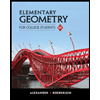Step 1: Start by drawing points P and Q. Then use a straightedge to draw line PQ passing through points P and Q. Step 2: Draw point R, not on PQ. Step 3: Use a straightedge to draw line PR passing through points P and R. Step 4: Set the width of a compass to about one-third the distance between P and R. Draw a circle with the center at P. Step 5: Label the intersection of OP and PR as point D. It should fall between points P and R. Label the intersection of O P and PQ as point C. It should fall between points P and Q. Step 6: Using the same compass setting from Step 4, draw a circle with the center at R. Label the point of intersection of OR and PR as point S. It should fall between points P and R. Label the other point of intersection as T. Step 7: Set the width of the compass to the distance between D and
Step 1: Start by drawing points P and Q. Then use a straightedge to draw line PQ passing through points P and Q. Step 2: Draw point R, not on PQ. Step 3: Use a straightedge to draw line PR passing through points P and R. Step 4: Set the width of a compass to about one-third the distance between P and R. Draw a circle with the center at P. Step 5: Label the intersection of OP and PR as point D. It should fall between points P and R. Label the intersection of O P and PQ as point C. It should fall between points P and Q. Step 6: Using the same compass setting from Step 4, draw a circle with the center at R. Label the point of intersection of OR and PR as point S. It should fall between points P and R. Label the other point of intersection as T. Step 7: Set the width of the compass to the distance between D and
Elementary Geometry For College Students, 7e
7th Edition
ISBN:9781337614085
Author:Alexander, Daniel C.; Koeberlein, Geralyn M.
Publisher:Alexander, Daniel C.; Koeberlein, Geralyn M.
ChapterP: Preliminary Concepts
SectionP.CT: Test
Problem 1CT
Related questions
Question
Can anyone draw this?

Transcribed Image Text:Step 1:
Start by drawing points P and Q. Then use a straightedge to
draw line PQ passing through points P and Q.
D
Step 2:
Draw point R, not on PÓ.
Step 3:
Use a straightedge to draw line PR passing through points P
and R.
Step 4:
Set the width of a compass to about one-third the distance
between P and R. Draw a circle with the center at P.
Step 5:
Label the intersection of O P and PR as point D. It should
fall between points P and R. Label the intersection of O P and
PQ as point C. It should fall between points P and Q.
Step 6:
Using the same compass setting from Step 4, draw a circle with
the center at R. Label the point of intersection of OR and PR
as point S. It should fall between points P and R. Label the
other point of intersection as T.
Step 7:
Set the width of the compass to the distance between D and C.
Step 8:
Using this compass setting, draw a circle with the center at T.
Label the points of intersection of OR with O T as points F
and G.
Step 9:
Use a straightedge to draw either line RG or RF, whichever
one appears to be parallel to line PQ.
Expert Solution
This question has been solved!
Explore an expertly crafted, step-by-step solution for a thorough understanding of key concepts.
This is a popular solution!
Trending now
This is a popular solution!
Step by step
Solved in 2 steps with 1 images

Recommended textbooks for you

Elementary Geometry For College Students, 7e
Geometry
ISBN:
9781337614085
Author:
Alexander, Daniel C.; Koeberlein, Geralyn M.
Publisher:
Cengage,

Elementary Geometry for College Students
Geometry
ISBN:
9781285195698
Author:
Daniel C. Alexander, Geralyn M. Koeberlein
Publisher:
Cengage Learning

Elementary Geometry For College Students, 7e
Geometry
ISBN:
9781337614085
Author:
Alexander, Daniel C.; Koeberlein, Geralyn M.
Publisher:
Cengage,

Elementary Geometry for College Students
Geometry
ISBN:
9781285195698
Author:
Daniel C. Alexander, Geralyn M. Koeberlein
Publisher:
Cengage Learning